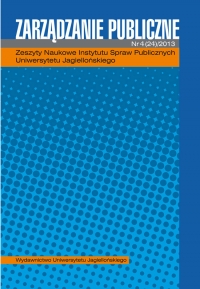Macroeconomic trends by the use of structural funds
Macroeconomic trends by the use of structural funds
Author(s): István Takács, Zsolt Baranyai, János Balázs Tóth, Miklós VásárySubject(s): Economy
Published by: Wydawnictwo Uniwersytetu Jagiellońskiego
Keywords: EU supports; development; V4 countries; analyses; convergence
Summary/Abstract: The main goal of the European Union's regional policy is to reduce structural disparities between EU member states and regions. The balanced development throughout the EU can promote real equal opportunities for all. So the policy is based on the concept of solidarity and cohesion of economic and social conditions. It achieves this by means of a variety of financing operations, principally through the Structural Funds and the Cohesion Fund. The policy focuses on three main objectives, convergence – solidarity, regional competitiveness and employment and European territorial cooperation. By these objectives the EU supported projects in a wide range of areas – at regional and national level – from business support to urban development. It is very important that, these themes reflect the objectives of the Europe 2020 strategy to promote smart, sustainable and inclusive growth. Between 2007 and 2013 for the European Union's regional policy is allocated 347 billion euro, 35.7% of the total EU budget for that period, just over 49 billion euro a year. All programmes are co-financed by the member countries the total available funding is almost 700billion euro, so the programmes and the results are and will be significant. The main programmes, eligible areas, and the beneficiaries of the national programs can be summarized, but to measure the various programs effectiveness, in the different countries, are much more complicated. The results depend on a lot of variables, for example the managerial institutional system, the structure of the national programs, the habitat of the participant and many obvious and potential, external and internal economical and social conditions. But despite of the dissimilarities, we try to collect, through some macroeconomical structural indicators, the main characteristic trends of the utilization EU sources. With various methods, we will characterize the coherence between gross domestic product, labour force statistics etc. Because the analysis of the 27 EU countries could be voluminous, it will be focused on some countries of Central and Eastern Europe.
Journal: Zarządzanie Publiczne
- Issue Year: 24/2013
- Issue No: 4
- Page Range: 491-504
- Page Count: 14
- Language: English

